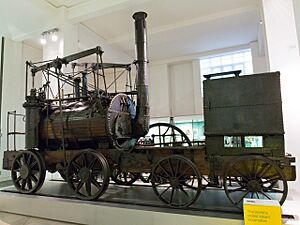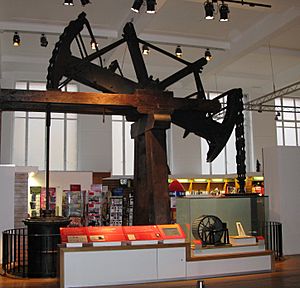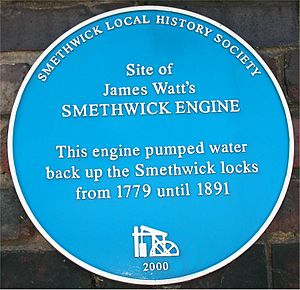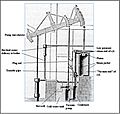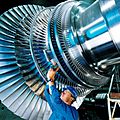Steam engine facts for kids
A steam engine is a special kind of engine that uses steam from boiling water to create movement. This steam pushes on parts inside the engine, making them move. Steam engines can power many different machines, including vehicles and electric generators that make electricity.
Contents
When Were Steam Engines First Used?
Steam engines first appeared in mines in the early 1700s. They were used to pump water out of the mines. James Watt greatly improved these engines in the 1770s. These improvements were very important during the Industrial Revolution. Steam engines took over from horses, windmills, and watermills to power machines in factories.
The first steam engines were called piston engines. Steam pressure pushed a piston back and forth inside a cylinder. This back-and-forth movement could directly power a pump. It could also turn a crank to spin a wheel and operate other machines. These early engines worked at low pressure, so they had to be very big to produce much power.
Steam engines were used in factories to run machines. They also helped in mines to move pumps. Later, smaller engines were built. These could move railway locomotives and steam boats.
How Does a Steam Engine Work?
The steam that powers a steam engine is made in a boiler. The boiler heats water to turn it into steam. Usually, a fire heats the boiler. The fuel for this fire can be wood, coal, or petroleum. Sometimes, nuclear or solar energy is used instead of fire.
The steam coming from the boiler pushes on a piston. A valve directs the steam first to one side of the piston, then to the other. This makes the piston move back and forth. The piston's movement is then used to turn wheels or power other machinery. A part called the crosshead keeps the piston rod straight. A heavy spinning flywheel helps to make the power from the piston smooth and steady. A device called a governor controls how fast the engine runs.
Modern steam turbines can have their boilers heated by many different fuels. Some power stations and warships even use a nuclear reactor to create the steam.
Steam Engines Today: Turbines
Many steam engines are still used today. However, most of them are now turbines. Turbines do not have pistons. Instead, they spin like a windmill when jets of steam push on them. These turbines spin much faster and are more efficient than the old piston steam engines.
Steam turbines are mainly used in power plants. There, they operate generators that make electricity. Some large ships are also powered by steam turbines.
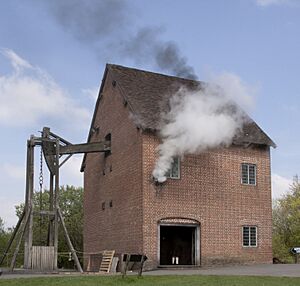
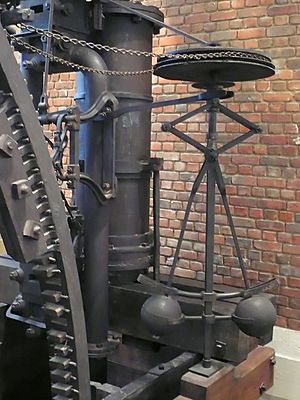
Images for kids
-
A mill engine from Stott Park Bobbin Mill, Cumbria, England.
-
A steam locomotive from East Germany. This class was built from 1942–1950 and used until 1988.
-
An early Watt pumping engine.
-
A triple-expansion marine steam engine on the 1907 oceangoing tug Hercules.
-
A rotor of a modern steam turbine, used in a power plant.
-
Turbinia – the first ship powered by a steam turbine.
-
An aeolipile rotates as steam escapes from its arms.
-
A steam locomotive – a GNR N2 Class No.1744 at Weybourne near Sheringham, Norfolk.
-
A steam-powered bicycle by John van de Riet, in Dortmund.
-
A British horse-drawn fire engine with a steam-powered water pump.
See also
 In Spanish: Máquina de vapor para niños
In Spanish: Máquina de vapor para niños


